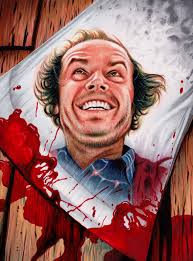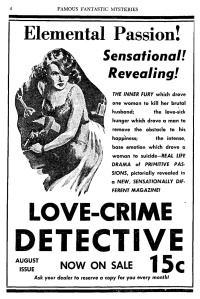
Although colleges will ask you for a personal letter to assist in their selection process this is not in fact what they are looking for. They are looking to create a fit; an appropriate connection; the correct person for the available college resources. This means that the applicant needs to be aware that their letter of intent, rather than a personal statement, should be a carefully crafted document in order to illicit interest and most importantly, to simplify the selection committee’s choice. For example, rather than ramble on about your love affair with books and literature, direct instead your letter towards a specific period and department. By engendering the letter towards available programs and possibly known professors the applicant will significantly increase their chance of selection. Remember there are hundreds of applications, therefore, your job is to make the task of the selection board that much simpler. By offering direction rather than vague notions of literary allusion the candidate will not only stand head and shoulders above the multitudes but will significantly increase their chances of selection. Do not be fooled by the title of “personal statement”; do not reveal the deepest darkest corners of your soul but rather illuminate your writing with practicality. They want you in their college. They just need a little help in finding the right fit. The idea is to temper your own experiences and educational aspirations to available resources. Once again – as you have heard a thousand times before – be eloquent, be bright; use prose ” that would ascend the brightest heaven of invention” but keep it simple. George Orwell said that “good writing should be like clear glass.” Keep this in mind when penning your piece and for goodness sake keep it relevant. It may be a personal statement but it is definitely not all about you. It’s about the college and your own place within it. Make sure that you fashion your words to fit the institution and department of your choice. Craft your letter carefully to dovetail the available pigeon holes. Good luck to you.
The following is my own letter which was instrumental in my successful selection to the Masters program at ASU.
I came of age in the 1980s in the north of England, a particularly austere period for what had been – until that fateful decade – the manufacturing center of the known Universe. Steel, ships, coal, railway carriages and chocolate where all produced within a hundred miles of where I grew up. The possibility of work after graduation was unquestionable; guaranteed employment for life. When I finally left comprehensive education, unemployment in east Yorkshire was higher than it had been in the 1930s and the aforementioned industries had all closed down and disappeared. Britain was no longer the engineering hub of the world but instead had become a land decimated and divided by greed and governmental neglect. Naturally I’m talking about the Thatcher years, when Margaret decided that there was no such thing as community – despite being the daughter of a grocer – and that Britain was a nation of individuals. Greed was the watchword of the hour and money poured into the south via the City and out of the north via asset stripping – the sale of machinery and associated jobs – and shipped abroad. The north was obliterated.
The protests that arose to confront the tyranny and self-serving policies of the Tories gave rise to a form of literature which has abided with me ever since; the literature of the politically isolated and disenfranchised. When men are idle and families starving their minds turn to other things and often, as in the case of the striking miners, to the pen as well as the placard. Margaret Thatcher if nothing else was a terrific muse and her self-absorbed largesse reinvigorated the literature of the working class. One only has to think of the politically charged music of Billy Bragg and The Smiths, Bleasdale’s “Boys from the Black Stuff” and Franc Roddam’s “Aufwiedersehen Pet.” This voice, although pertinent, is not specific to the then newly unemployed of the eighties and can be found throughout literary history. Literature has always been a reactionary medium of political discourse reflecting the concerns of working people and quotidian politic. It’s this voice that interests me and wish to pursue. It is after all, the abstract and brief chronicler of our time.
It’s the retrospective of history that allows one to reflect upon the inequalities of our own contemporary world and therefore, it’s the period of the Renaissance and in particular the writers and poets of the sixteenth century, that I wish to pursue. Given this tumultuous period of religious upheaval, the awakening of what would become the modern mind and the foundation of what we today call western society, I want to further my understanding of how the literature of the period underpinned the attitudes and frustrations of the masses; what it was they understood to be representative of their own disenfranchisement and how they formulated their grievances through the satirical and polemic. To comprehend the essence of quotidian sixteenth century society and attempt to appreciate the level of public dissatisfaction necessary to subvert what was ostensibly a police state. Their ineffable ability to show case injustice and malcontent whilst – and not always successfully – evade the censorious eye of the regime. Ultimately through the study of Renaissance Literature I hope to further acquaint myself with those, who dared to imagine that mere words on a page could alter that which was intolerable or unjust. It’s the voice of the everyman and the politically disenfranchised who documented inequitable and oppressive circumstance – exposing the injustice of modernity – which draws me. It’s the working man’s hand that I wish to grasp from the pages of plays and poems to supplement my own experience of what is ultimately the human condition; the centuries of subjugation and struggle which today are as pertinent to a 21st century society as they were to the groundlings at “The Globe.”
As an undergraduate at ASU I have studied under Professors Corse and Fox and would be delighted to be able to continue to do so. In particular my sixteenth century satirical studies with Professor Corse were extremely instrumental in my desire to pursue this particular vein of socio-polemic literature. Likewise Professor Fox – whose encyclopedic understanding of Shakespearian literature and diverse contemporary authors was beyond illuminating – excited my interest in the social and political undercurrents of the English Renaissance. The chance to study with either of these professors in order to increase my knowledge in the field of Renaissance literature and literary satire would be beyond gratifying.
As with all choices there’s always more than one reason why one makes certain decisions and as the product of my own experience, electing to pursue an MA at ASU is no different. Not only will it enhance future employment possibilities, it will, more importantly, advance my own creative writing ambitions and lend itself to my desire to continue my education once completed. If the strikes of the eighties taught me anything it was the importance of education and a necessary ability to adapt. Modern America is no different in many respects from rural Yorkshire and the jobs which exist today – as I have witnessed at first hand in an ever diminishing manufacturing sector – may not be here tomorrow. Forewarned – as the adage goes – is forearmed.
Today I live in Phoenix with my wife and children, having settled here over ten years ago and operate a business on the west side of town. On first arriving in Arizona, after buying our home, I sent photographs to my family in England, justly proud of my new found materialism. My father looked at the photographs and, ignoring my possessions completely, focused on the blue sky. The new car and house might just as well not have been in the pictures. One can understand that living on a windswept island where we have more words for inclement weather than the Inuit have for snow, that the glimpse of an azure blue sky framed by palms trees might be appealing. Needless to say it wasn’t long before he boarded an aeroplane to visit us and enjoy for himself that with which he’d been sorely tempted. Phoenix, just as he discovered, is my home and therefore, ASU my college of choice.























